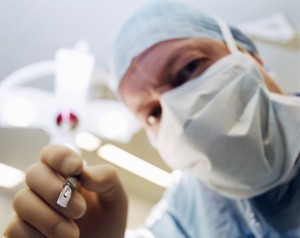Isis Commercialising Cleft Palate Treatment

26th March 2010
Oxford University Innovation, the University of Oxford’s technology transfer company, is working with researchers to commercialise a hydrogel material which promises better treatment for cleft palates - a birth defect that affects 1 in 700 babies in the UK.
The hydrogel can also be used in other cases of surgical reconstruction, and in routine dental applications.
The research and development is being led by Jan Czernuszka and a team of researchers including Jinhyun Hannah Lee and Zamri Radzi from the University of Oxford’s Department of Materials. Surgeons from the John Radcliffe Hospital, including Mr Marc Swan, of the Department of Plastic and Reconstructive Surgery, and researchers from Georgia Institute of Technology in the United States also played an important role.
The team used the Science and Technology Facilities Council’s ISIS neutron source to look at the hydrogel polymer’s molecular structure in order to see how the material might be used as part of a simplified surgical treatment.
Cleft Palate Treatment
Cleft palate treatment will involve inserting an anisotropic hydrogel material – similar to that used in contact lenses – under the mucosa of the roof of the mouth.
Once inserted, the hydrogel gradually expands as fluid is absorbed, encouraging skin growth over and around the plate. After sufficient skin has been generated to repair the palatal cleft, the plate is removed and the cleft is repaired using this additional tissue.
The success of the preliminary studies of the self-inflating anisotropic hydrogel tissue expander has led to the first clinical trials being expected to take place early in 2011.
The technology is also useful for a wide range of other surgical applications. One key field is dental treatments, including restorative dentistry, implant surgery and treatment of periodontal disease.
The hydrogel provides a reliable method for expansion of soft tissue, in procedures such as implant surgery where bone augmentation is required. Its use will improve patient outcomes and the predictability of outcomes. In the UK 80,000 implants are fitted, with an estimated 70 per cent of cases requiring bone augmentation.
Other applications of the material include soft tissue expansion following removal of carcinomas, treatment of congenital birth defects, scar tissue and wound repair.
The work was awarded £72,500 by the Oxford University Challenge Seed Fund in July 2009 to accelerate the commercialisation of the technology, and fund a post-doctoral researcher to further develop the method of limiting the rate of hydrogel expansion, increasing the number of potential applications and markets for the device.
Isis has patented the technology and welcomes contact from industry partners to take the technology to market.
Press release sign up
